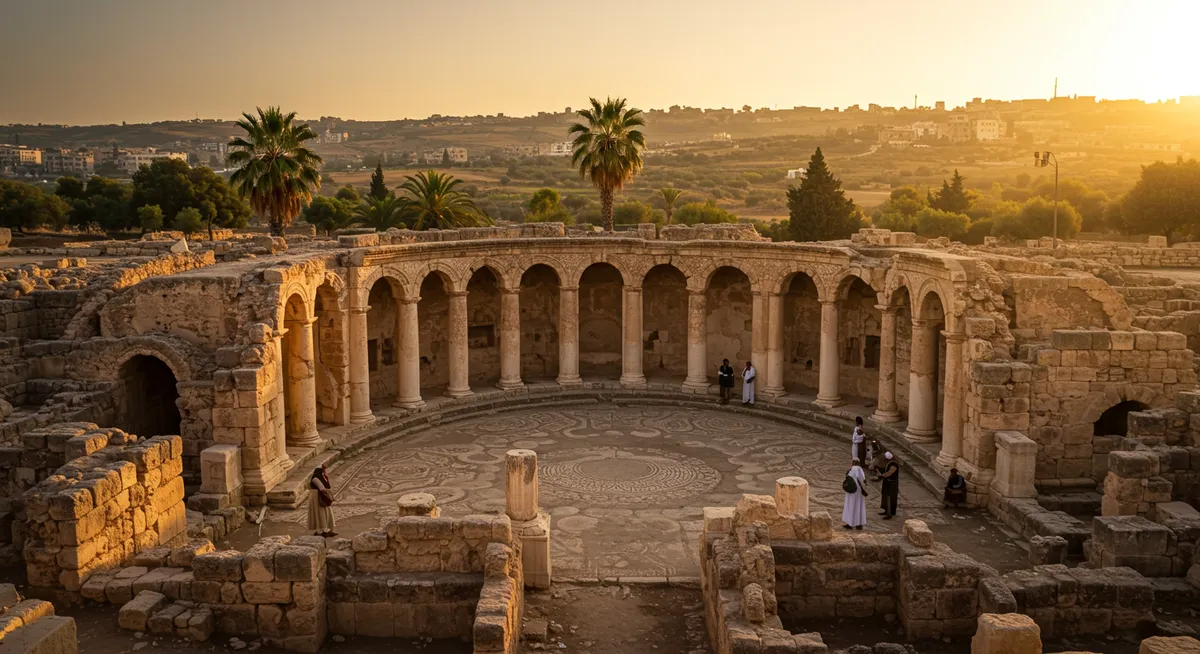
Lesser Known Historical Sites in Tripoli
Table of Contents
Want to find the best travel deals for this destination? Chat with our travel hacking specialist!
Get Travel HacksCategory: lesser-known-historical-sites-tripoli
Unveiling Tripoli's Hidden Historical Gems
Having explored Tripoli, Lebanon, extensively over several visits, I've always been drawn to its less-trodden paths, seeking out the stories etched in its ancient stones beyond the popular attractions. While the Citadel of Raymond de Saint-Gilles and the vibrant souks are undoubtedly magnificent, Tripoli holds a treasure trove of lesser known historical sites, each whispering tales of Mamluk sultans, Ottoman governors, and Phoenician traders. This guide aims to pull back the curtain on these secluded architectural wonders, inviting you to discover a side of Tripoli often overlooked by casual visitors. Prepare to delve into the heart of history, uncovering layers of heritage. Enhance your Tripoli experience with our Tripoli itinerary. Enhance your Tripoli experience with our Tripoli itinerary.
Unearthing the Past: Tripoli's Hidden Railway Station
Among the truly lesser known historical sites Tripoli offers is its poignant Ottoman-era railway station. Tucked away on the city's outskirts, this abandoned marvel stands as a testament to a bygone era of transport and connectivity. Walking through its desolate platforms and the main station building, you can almost hear the rumble of trains that once linked Tripoli to Beirut and beyond. It’s a powerful, almost eerie, experience for history enthusiasts. Visiting this unique spot provides a distinct perspective on Lebanon's industrial past, far removed from the bustling souks. My personal tip: wear sturdy shoes, as parts of the area can be uneven, and allow ample time for reflection. Plan your perfect trip with our Tripoli itinerary. Keep exploring Tripoli: Tripoli attractions.
Beyond the Citadel: Discovering the Lion Tower
While the Citadel dominates the skyline, another significant historical fortification, often overshadowed, is the Lion Tower (Burj as-Sbaa). Located near the port, this impressive Mamluk tower, built in the 15th century, was once part of Tripoli's extensive coastal defense system. Its formidable stone walls and strategic position highlight its importance in protecting the city from maritime threats. Exploring the Lion Tower provides a fascinating glimpse into the military architecture of medieval Tripoli, showcasing a different facet of its rich past. It’s definitely one of the more underrated historical places that merit exploration for those curious about ancient fortresses. Pair your visit here with a stroll along the waterfront to fully appreciate its strategic context, perhaps even finding a hidden gem café as part of your Tripoli exploration. Enhance your Tripoli experience with our Tripoli itinerary.
Echoes of Elegance: Hammam al-Jadid and Mamluk Architecture
Delve deeper into the city's Mamluk heritage by seeking out Hammam al-Jadid, or the New Hammam. While not always operational as a public bath, its preserved architecture offers a captivating window into the social life and intricate designs of historic Tripoli. This grand bathhouse, characterized by its domed ceilings, marble interiors, and geometric patterns, was a vital community hub. The remnants of its original grandeur allow you to visualize daily routines from centuries past, embodying the architectural beauty of its time. These types of unique historical sites truly showcase the city's profound depth. For more on discovering unique experiences, consider exploring our Tripoli off-the-beaten-path guide for 2025. Immerse yourself in local culture with our Tripoli cultural guide.
Wandering the Forgotten Khans: Khan al-Khayyatin
Tripoli is famed for its khans, or caravanserais, but Khan al-Khayyatin (the Tailors' Khan) is particularly noteworthy for its intricate details and often overlooked beauty. Nestled within the labyrinthine old souks, this 14th-century khan once buzzed with merchants and travelers. Its grand courtyard, arched walkways, and multiple levels reveal an architectural mastery characteristic of Mamluk-era commercial hubs. While parts are still active with tailors, much of its historical essence remains intact, inviting quiet contemplation. It's truly one of the compelling lesser known historical sites Tripoli proudly preserves. As you wander these ancient passages, you'll feel the pulse of history, making this a true Tripoli hidden gem.
A Glimpse into Spiritual History: The Church of St. Catherine
For those interested in religious history, the Church of St. Catherine offers a fascinating, albeit often missed, stop. Originally a Crusader church dating back to the 13th century, it was later converted into a mosque during the Mamluk period, only to be partially restored as a church much later. This layered history is physically embodied in its architecture, where elements from different eras coexist. Its unassuming facade belies the rich tapestry of stories within, making it one of the most historically significant yet lesser known historical sites Tripoli holds. This juxtaposition of cultures and faiths makes it a profound site, especially after you've savored some of Tripoli's authentic street food nearby.
Frequently Asked Questions
What is the best way to explore Tripoli's lesser known historical sites?
Are these historical sites safe to visit?
Exploring the lesser known historical sites Tripoli offers is a profoundly rewarding experience, revealing the city's multifaceted past beyond its most famous landmarks. From the silent grandeur of the old railway station to the architectural whispers of hidden khans and bathhouses, these forgotten corners invite a deeper connection with Lebanon’s rich heritage. They provide an authentic glimpse into the daily lives, trade, and spirituality that shaped this ancient city over millennia. Don't just tick off the main attractions; embrace the adventure of discovery and uncover the true soul of Tripoli, one hidden gem at a time. Need extra inspiration for Tripoli? Check Tripoli experiences for insider ideas.